My friends say that I hate rosé. I don’t. I just think there are many far more interesting alternatives. (Here, we’re talking about still wine, not rosé Champagne, which is heavenly.) Most rosé is innocuous. “I’ll have a glass of rosé,” has replaced “I’ll have a glass of Chardonnay” as shorthand for “I want a glass of wine—I don’t need to know anything else about it.” … Read more
All posts by admin
Crosby Roamann, Napa Valley (California) Sauvignon Blanc 2022
($85): 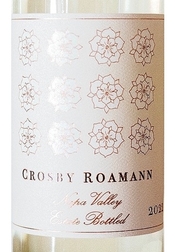 I would like to know more about Crosby Roamann, a Napa Valley winery I am unfamiliar with, because this wine is stunning. Sadly, I could not penetrate their website because a pop-up announcing their newsletter required an email address, which I was not inclined to leave, before proceeding. … Read more
I would like to know more about Crosby Roamann, a Napa Valley winery I am unfamiliar with, because this wine is stunning. Sadly, I could not penetrate their website because a pop-up announcing their newsletter required an email address, which I was not inclined to leave, before proceeding. … Read more
Domaine La Florane, Côtes du Rhône-Villages Saint Maurice (Rhône Valley, France) “Echevin” 2021
($21): 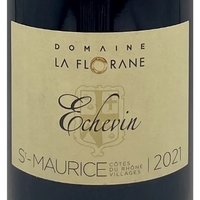 The Rhône Valley provides a treasure trove of reasonably priced reds and whites, especially from the appellations with a lesser pedigree compared to the famed ones, such as Châteauneuf-du-Pape or Hermitage. There is a trio of appellations, Côte du Rhône, Côtes du Rhone-Villages, and Côtes du Rhône-Villages with a named village appended, such as Saint Maurice, that offer particularly good value. … Read more
The Rhône Valley provides a treasure trove of reasonably priced reds and whites, especially from the appellations with a lesser pedigree compared to the famed ones, such as Châteauneuf-du-Pape or Hermitage. There is a trio of appellations, Côte du Rhône, Côtes du Rhone-Villages, and Côtes du Rhône-Villages with a named village appended, such as Saint Maurice, that offer particularly good value. … Read more
Domaine Servin, Chablis Premier Cru (Burgundy, France) Butteaux 2022
($32): 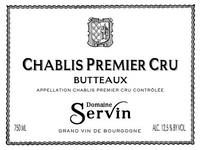 For hockey aficionados, this wine is a hat trick: Great producer, great vintage, great price. For non-hockey fans, just buy this wine. Some of it is in my cellar. You’ll smile. Domaine Servin, one of Chablis’ top producers, succeeded admirably with their 2022s, which is not surprising given the stature of the vintage. … Read more
For hockey aficionados, this wine is a hat trick: Great producer, great vintage, great price. For non-hockey fans, just buy this wine. Some of it is in my cellar. You’ll smile. Domaine Servin, one of Chablis’ top producers, succeeded admirably with their 2022s, which is not surprising given the stature of the vintage. … Read more
Maison Louis Latour, Bourgogne Aligoté (Burgundy, France) 2022
($22): 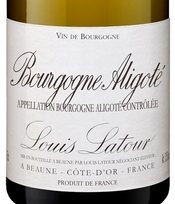 The appellation, Bourgogne Aligoté, is an anomaly in Bourgogne, the epicenter of terroir-based viticulture, because it is named for the grape, not the site. The grapes for Bourgogne Aligoté can come from anywhere in Bourgogne, from the Côte Auxerrois in the north near Chablis to Mâcon in the south. … Read more
The appellation, Bourgogne Aligoté, is an anomaly in Bourgogne, the epicenter of terroir-based viticulture, because it is named for the grape, not the site. The grapes for Bourgogne Aligoté can come from anywhere in Bourgogne, from the Côte Auxerrois in the north near Chablis to Mâcon in the south. … Read more
Tongue Dancer, Russian River Valley (Sonoma County, California) Chardonnay 2021
($55): 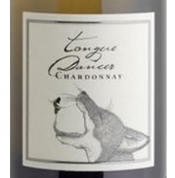 Tongue Dancer makes a range of Chardonnays (and Pinot Noirs) highlighting the uniqueness of the vineyards from which they source the grapes. This one, in contrast, is a blend of several vineyards from throughout the Russian River Valley. It is an opulent Chardonnay with all the richness you would expect from grapes grown in the Russian River Valley. … Read more
Tongue Dancer makes a range of Chardonnays (and Pinot Noirs) highlighting the uniqueness of the vineyards from which they source the grapes. This one, in contrast, is a blend of several vineyards from throughout the Russian River Valley. It is an opulent Chardonnay with all the richness you would expect from grapes grown in the Russian River Valley. … Read more
Tongue Dancer, Russian River Valley (Sonoma County, California) Chardonnay Bacigalupi Vineyard 2021
($50):  Choosing between Tongue Dancer’s Bacigalupi and the Pratt Vineyard bottlings is like choosing between your children. To be sure, the wines are different despite similar winemaking philosophy, which shows that terroir influence (i.e., where the grapes grow has an impact) is alive and well in California. … Read more
Choosing between Tongue Dancer’s Bacigalupi and the Pratt Vineyard bottlings is like choosing between your children. To be sure, the wines are different despite similar winemaking philosophy, which shows that terroir influence (i.e., where the grapes grow has an impact) is alive and well in California. … Read more
Tongue Dancer, Russian River Valley (Sonoma County, California) Chardonnay Pratt Vineyard, Irwin Lane 2021
($59):  Wow! Here in the 2021 Pratt Vineyard Chardonnay the winemaking team at Tongue Dancer has combined opulence with finesse. Freshness in the finish serves to amplify the wine’s considerable charm. A delectable hint of bitterness in the finish reinforces its stature and complexity. … Read more
Wow! Here in the 2021 Pratt Vineyard Chardonnay the winemaking team at Tongue Dancer has combined opulence with finesse. Freshness in the finish serves to amplify the wine’s considerable charm. A delectable hint of bitterness in the finish reinforces its stature and complexity. … Read more
Wither Hills Winery, Marlborough (South Island, New Zealand) Sauvignon Blanc 2023
($15, Distinguished Vineyards & Wine Partners):  Here is an example of why New Zealand — specifically Marlborough — Sauvignon Blanc has captured the world’s attention. It delivers a delightfully cutting and invigorating lime-like edginess that cuts through any flavor on the plate, as well as the heat and humidity of summer. … Read more
Here is an example of why New Zealand — specifically Marlborough — Sauvignon Blanc has captured the world’s attention. It delivers a delightfully cutting and invigorating lime-like edginess that cuts through any flavor on the plate, as well as the heat and humidity of summer. … Read more
Maset des Montagnes, Côtes du Roussillon (Languedoc-Roussillon, France) Grenache – Macabeu “Terroirs D’Altitude” 2022
($23, Albert Bichot USA): 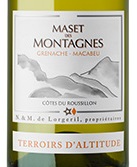 With this wine, Maset des Montagnes, one of the estates under the umbrella of Domaines N & M de Lorgeril, shows that refreshing whites can come from the sun baked south of France. This 50/50 blend of Grenache Blanc and Macabeu delivers an enlivening combination of delicate stone fruitiness and spice all supported by a firm spine of acidity. … Read more
With this wine, Maset des Montagnes, one of the estates under the umbrella of Domaines N & M de Lorgeril, shows that refreshing whites can come from the sun baked south of France. This 50/50 blend of Grenache Blanc and Macabeu delivers an enlivening combination of delicate stone fruitiness and spice all supported by a firm spine of acidity. … Read more
Maison Albert Bichot, Petit Chablis (Burgundy, France) 2022
($26, Albert Bichot USA):  In my mind, Petit Chablis is a misnomer because “petit” somehow diminishes the wine. Petit Chablis comes from Chardonnay planted in a different kind of limestone compared to those labeled Chablis, imparting more fruitiness and less minerality. … Read more
In my mind, Petit Chablis is a misnomer because “petit” somehow diminishes the wine. Petit Chablis comes from Chardonnay planted in a different kind of limestone compared to those labeled Chablis, imparting more fruitiness and less minerality. … Read more
Bells Up Winery, Chehalem Mountains (Willamette Valley, Oregon) Pinot Noir “Maestro” Estate Reserve 2021
($56): 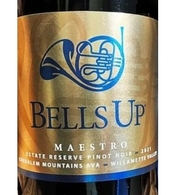 The delicate, 13.3 percent stated alcohol, Maestro, named to honor John Williams, combines the pure, red fruit of the winery’s Titan bottling with a mild touch of minerals seen in the Candide offering. It displays the same purity and verve as the other Bells Up Pinot Noirs. … Read more
The delicate, 13.3 percent stated alcohol, Maestro, named to honor John Williams, combines the pure, red fruit of the winery’s Titan bottling with a mild touch of minerals seen in the Candide offering. It displays the same purity and verve as the other Bells Up Pinot Noirs. … Read more
Bells Up Winery, Chehalem Mountains (Willamette Valley, Oregon) Pinot Noir “Candide” Estate Reserve 2021
($56):  Named for Leonard Bernstein’s operetta, Candide, this mid-weight, 13.6 percent stated-alcohol, Pinot Noir delivers bright red crunchy fruit with more than a delightful hint of accenting spicy savory notes. Lip smacking acidity keeps it fresh. It grows in the glass so don’t rush it. … Read more
Named for Leonard Bernstein’s operetta, Candide, this mid-weight, 13.6 percent stated-alcohol, Pinot Noir delivers bright red crunchy fruit with more than a delightful hint of accenting spicy savory notes. Lip smacking acidity keeps it fresh. It grows in the glass so don’t rush it. … Read more
Bells Up Winery, Chehalem Mountains (Willamette Valley, Oregon) Pinot Noir Estate “Jupiter” 2021
($50): 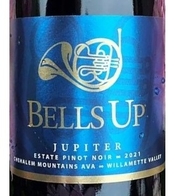 Dave Spector, the owner of Bells Up gives all of their wines musical references because he was a French horn player for decades. Despite a similar stated alcohol to Candide,13.5 percent, the Jupiter (think Mozart’s Symphony #41) bottling is weightier, displaying rich, black fruit notes intertwined with a charming minerality. … Read more
Dave Spector, the owner of Bells Up gives all of their wines musical references because he was a French horn player for decades. Despite a similar stated alcohol to Candide,13.5 percent, the Jupiter (think Mozart’s Symphony #41) bottling is weightier, displaying rich, black fruit notes intertwined with a charming minerality. … Read more
Diebolt-Vallois, Champagne (France) Blanc de Blancs Extra Brut NV
($40): 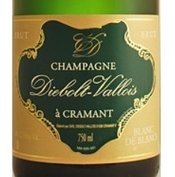 It is unusual to find a non-vintage Blanc de Blancs Champagne, especially at this price, since most of the single Chardonnay cépage wine goes into vintage or super premium bottlings. The Diebolt-Vallois delivers all the grace and precision you would expect from a Blanc de Blancs coupled with substantial body, making a good choice to bring to the table after you have a glass — or two — as an aperitif.… Read more
It is unusual to find a non-vintage Blanc de Blancs Champagne, especially at this price, since most of the single Chardonnay cépage wine goes into vintage or super premium bottlings. The Diebolt-Vallois delivers all the grace and precision you would expect from a Blanc de Blancs coupled with substantial body, making a good choice to bring to the table after you have a glass — or two — as an aperitif.… Read more
Benjamin Leroux, Bourgogne Aligoté (Burgundy, France) 2020
($38):  In just a few years, Benjamin Leroux has become one of the star young producers in Burgundy. And with good reason. His wines are precise with good weight, which describes this Aligoté. The ripeness of the vintage marries beautifully with the cutting edginess inherent to the Aligoté grape. … Read more
In just a few years, Benjamin Leroux has become one of the star young producers in Burgundy. And with good reason. His wines are precise with good weight, which describes this Aligoté. The ripeness of the vintage marries beautifully with the cutting edginess inherent to the Aligoté grape. … Read more
Bells Up Winery, Willamette Valley (Oregon) Pinot Blanc “Rhapsody” 2023
($38): 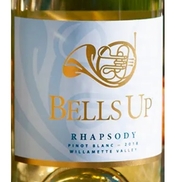 Who knew, great Pinot Blanc from Oregon? By now, everyone knows that Oregon makes gorgeous Pinot Noir. But Pinot Blanc? This one, from Bells Up winery in the Willamette leads with aromatics of white flowers and follows with surprisingly good weight for Pinot Blanc, without being overdone. … Read more
Who knew, great Pinot Blanc from Oregon? By now, everyone knows that Oregon makes gorgeous Pinot Noir. But Pinot Blanc? This one, from Bells Up winery in the Willamette leads with aromatics of white flowers and follows with surprisingly good weight for Pinot Blanc, without being overdone. … Read more
Bells Up Winery, Willamette Valley (Oregon) Pinot Noir “Titan” 2021
($46): 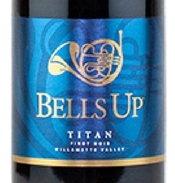 Bells Up makes a wide range of excellent Pinot Noir releases that differ stylistically yet maintain a family characteristic — purity. All of them are named after musical references because Dave Specter, the owner, played the French horn for more than two decades. … Read more
Bells Up makes a wide range of excellent Pinot Noir releases that differ stylistically yet maintain a family characteristic — purity. All of them are named after musical references because Dave Specter, the owner, played the French horn for more than two decades. … Read more
Sébastien Girost, Champagne (France) Pur Meunier “Dure Peine” Brut NV
($52, Ideal Wine & Spirits): 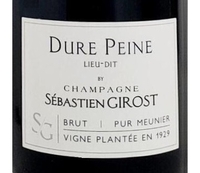 Located in the town of Congy in Coteaux du Morin, just south of the Côtes des Blancs, Sébastien Girost is located in an obscure area of Champagne. This release, made entirely from Pinot Meunier from a single vineyard, Dure Peine, planted in 1929, is, in a word — captivating. … Read more
Located in the town of Congy in Coteaux du Morin, just south of the Côtes des Blancs, Sébastien Girost is located in an obscure area of Champagne. This release, made entirely from Pinot Meunier from a single vineyard, Dure Peine, planted in 1929, is, in a word — captivating. … Read more
Domaine du Cellier aux Moines, Montagny Premier Cru (Burgundy, France) Les Charmelottes Vieilles Vignes “1939” 2020
($80): 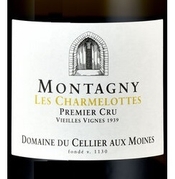 Unlike the rest of Burgundy, the 1er Cru classification in Montagny has little significance since a whopping 58 percent of vineyards are classified as such. In any case, this Montagny is outstanding, perhaps the best I have ever had. It shows what old vines in the hands of a detailed-oriented and talented producer can achieve. … Read more
Unlike the rest of Burgundy, the 1er Cru classification in Montagny has little significance since a whopping 58 percent of vineyards are classified as such. In any case, this Montagny is outstanding, perhaps the best I have ever had. It shows what old vines in the hands of a detailed-oriented and talented producer can achieve. … Read more
Domaine Louis Michel et Fils, Chablis Premier Cru (Burgundy, France) Montée de Tonnerre 2022
($49):  Domaine Louis Michel, one of my favorite Chablis producers, has put out a masterful array of wines in 2022, at prices that are quite reasonable, especially given the current Burgundy market. Michel has been a longtime (since the 1960s) advocate of eschewing wood barrels for either fermentation or aging. … Read more
Domaine Louis Michel, one of my favorite Chablis producers, has put out a masterful array of wines in 2022, at prices that are quite reasonable, especially given the current Burgundy market. Michel has been a longtime (since the 1960s) advocate of eschewing wood barrels for either fermentation or aging. … Read more
Terroir in Barolo: Poderi Gianni Gagliardo
There’s no question that terroir—the concept that wines reflect the individual and unique site where the grapes grow—exists in Barolo. How could it not? With myriad growing plots differing by soil, exposure, and elevation, the Barolo DOCG produces hundreds of different wines, all from the same grape, Nebbiolo. … Read more
Castell’in Villa, Chianti Classico Riserva (Tuscany, Italy) 2017
($76, Oz Wine Company): 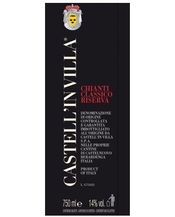 Do not be put off by the vintage — not a great one for Chianti Classico — nor the late release, which is the current one for this top producer. Their Riserva, made entirely from Sangiovese, comes from their best vineyards and spends two to three years in barrel aging prior to bottling. … Read more
Do not be put off by the vintage — not a great one for Chianti Classico — nor the late release, which is the current one for this top producer. Their Riserva, made entirely from Sangiovese, comes from their best vineyards and spends two to three years in barrel aging prior to bottling. … Read more
Orsoladi, Erbaluce di Caluso DOCG (Piedmont, Italy) “La Rustìa” 2021
($30):  It pays to listen to sommeliers who know their stuff. Jan Novak, the sommelier at Il Capriccio, a top Italian restaurant in Waltham, a Boston suburb, recommended this wine to me. It was unfamiliar to me, but her judgment is impeccable… so I ordered it. … Read more
It pays to listen to sommeliers who know their stuff. Jan Novak, the sommelier at Il Capriccio, a top Italian restaurant in Waltham, a Boston suburb, recommended this wine to me. It was unfamiliar to me, but her judgment is impeccable… so I ordered it. … Read more
Domaine Louis Michel et Fils, Chablis Premier Cru (Burgundy, France) Vaillons 2020
($56, Vineyard Brands): 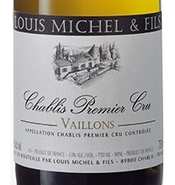 Louis Michel’s floral Vaillons couldn’t be more different from their weightier Butteaux. Yet, they are both superb. That’s the beauty of Burgundy in general and Chablis in particular. The same grape, Chardonnay in this case, grown on neighboring hills, produces vastly different, but equally enjoyable, wines. … Read more
Louis Michel’s floral Vaillons couldn’t be more different from their weightier Butteaux. Yet, they are both superb. That’s the beauty of Burgundy in general and Chablis in particular. The same grape, Chardonnay in this case, grown on neighboring hills, produces vastly different, but equally enjoyable, wines. … Read more
Domaine Louis Michel et Fils, Chablis Premier Cru (Burgundy, France) Butteaux 2020
($56, Vineyard Brands):  Louis Michel, one of Chablis’ top producers, eschews oak fermentation or aging for their Chablis, insisting that the use of stainless steel allows the magical combination of Chardonnay grape grown on Kimmerigdian limestone soil to shine. And shine it does with their 2020s. … Read more
Louis Michel, one of Chablis’ top producers, eschews oak fermentation or aging for their Chablis, insisting that the use of stainless steel allows the magical combination of Chardonnay grape grown on Kimmerigdian limestone soil to shine. And shine it does with their 2020s. … Read more
Château Malartic Lagravière, Pessac-Léognan (Bordeaux, France) “Le Comte de Malartic” 2019
($38): 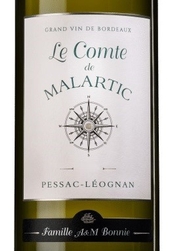 Château Malartic Lagravière, one of only six properties in Pessac-Léognan to be honored for both their reds and their whites in the 1953 Crus Classés des Graves classification, makes an array of stylish wines. Take this one, Le Comte de Malartic, the second white wine of the estate, for example. … Read more
Château Malartic Lagravière, one of only six properties in Pessac-Léognan to be honored for both their reds and their whites in the 1953 Crus Classés des Graves classification, makes an array of stylish wines. Take this one, Le Comte de Malartic, the second white wine of the estate, for example. … Read more
Nuraghe Crabioni, Vermentino di Sardegna DOC (Sardinia, Italy) “Carbioni” 2022
($19, Vias Imports): 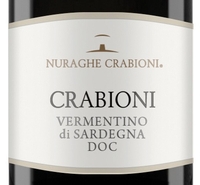 Vermentino is a go-to grape/wine when you yearn for a reasonably priced accompaniment for seafood. That is not to say there are no great upper-end renditions of Vermentino — there are — but there are also many more affordable releases that will introduce tasters to the charms of this grape/wine. … Read more
Vermentino is a go-to grape/wine when you yearn for a reasonably priced accompaniment for seafood. That is not to say there are no great upper-end renditions of Vermentino — there are — but there are also many more affordable releases that will introduce tasters to the charms of this grape/wine. … Read more
Giacomo Fenocchio, Barbera d’Alba Superiore (Piedmont, Italy) 2022
($28, Skurnik Wines): 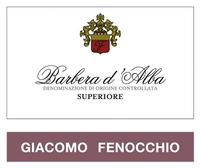 Every time I drink Barbera, I thank my friend (and sadly recently deceased) Ed McCarthy. Ed, of course, was known as “Mr. Champagne” but he also had forgotten more about Italian wine than I know. And he wisely championed Barbera, and in the process, converted me to its charms. … Read more
Every time I drink Barbera, I thank my friend (and sadly recently deceased) Ed McCarthy. Ed, of course, was known as “Mr. Champagne” but he also had forgotten more about Italian wine than I know. And he wisely championed Barbera, and in the process, converted me to its charms. … Read more
Paolo Conterno, Barbera d’Alba (Piedmont, Italy) La Ginestra 2019
($25, Skurnik Wines): 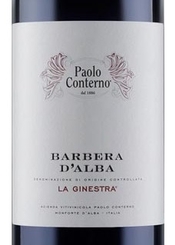 Barbera has an enormous quality range from insipid to fabulous, which can make choosing one a mine field. Yet, it is my “go-to” red at Italian restaurants because ones on a wine list should be high quality since the wine buyer for the restaurant has a wide selection from wholesale sources from which to choose. … Read more
Barbera has an enormous quality range from insipid to fabulous, which can make choosing one a mine field. Yet, it is my “go-to” red at Italian restaurants because ones on a wine list should be high quality since the wine buyer for the restaurant has a wide selection from wholesale sources from which to choose. … Read more
Goisot, Bourgogne Aligoté (Burgundy, France) 2022
($23): 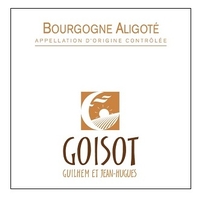 Aligoté is Burgundy’s “other” white grape and it’s the only time a Burgundy appellation wine carries the grape name on the label. The grapes can come from anywhere throughout Burgundy, but in Goisot’s case, they come from around their estate in the Côtes de Auxerre, in northern Burgundy, near Chablis. … Read more
Aligoté is Burgundy’s “other” white grape and it’s the only time a Burgundy appellation wine carries the grape name on the label. The grapes can come from anywhere throughout Burgundy, but in Goisot’s case, they come from around their estate in the Côtes de Auxerre, in northern Burgundy, near Chablis. … Read more
Gaspard, Vin de France (France) Sauvignon Blanc 2022
($19, Jenny & Françoise Selections):  Wines carrying the Vin de France appellation can be either wonderful or awful because they need not obey any rules. The winemaker decides everything — not the appellation authorities. Some of France’s greatest maverick winemakers have turned out sensational wines using their own quirky philosophy. … Read more
Wines carrying the Vin de France appellation can be either wonderful or awful because they need not obey any rules. The winemaker decides everything — not the appellation authorities. Some of France’s greatest maverick winemakers have turned out sensational wines using their own quirky philosophy. … Read more
From Decanter Magazine: Capezzana’s Trefiano: Quintessential Carmignano
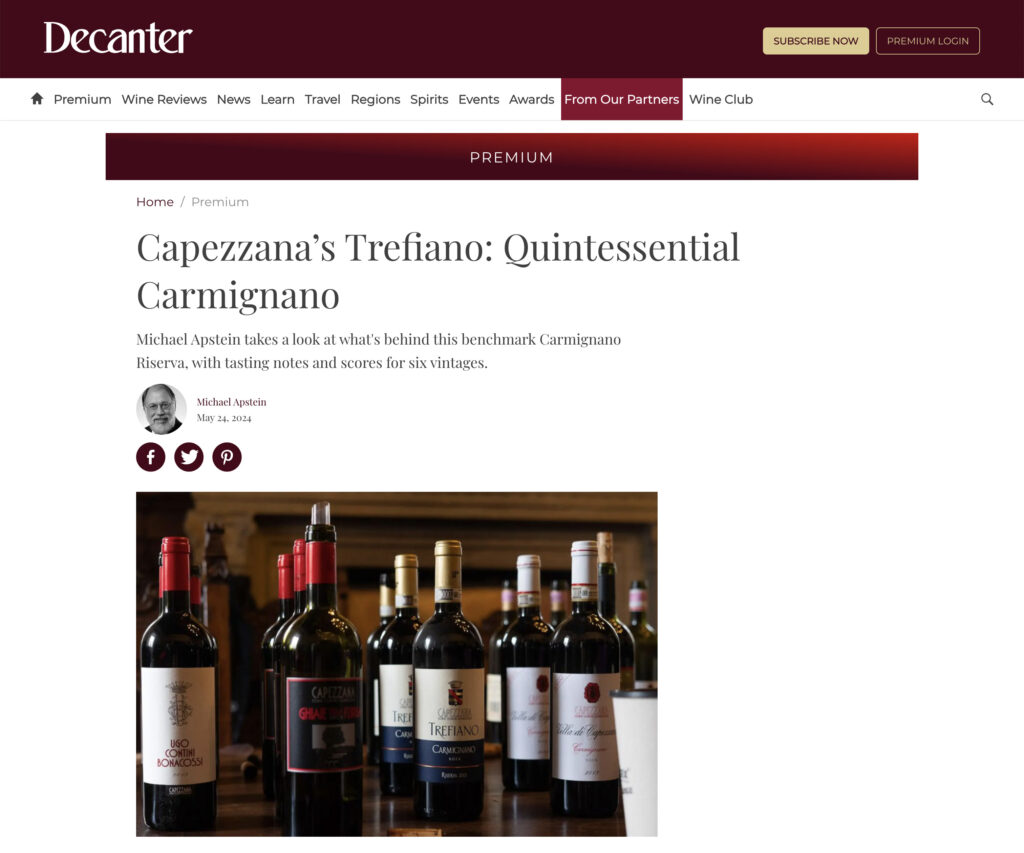
To celebrate the 40th anniversary of Trefiano – Tenuta di Capezzana’s stunning take on Carmignano Riserva – a vertical tasting of a handful of vintages ranging from 1988 to 2019 (the current release) was held in Florence this February.
In preparation for the tasting, I opened a bottle of the 2015 from my own cellar, so I have included my impression of that below, along with the wines from the tasting.… Read more
Paradise Springs, Virginia (United States) Petit Manseng 2022
($37): 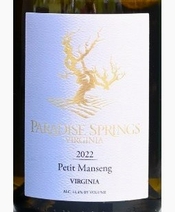 Petit Manseng is not a well-known grape. Although frequently used for making sweet wines in the southwest of France, it is capable, as this wine shows brilliantly, of making stellar dry wines. Jancis Robinson, the noted British wine authority, notes its high acidity makes it well-suited for the heat of Virginia, where it has been planted since 2010. … Read more
Petit Manseng is not a well-known grape. Although frequently used for making sweet wines in the southwest of France, it is capable, as this wine shows brilliantly, of making stellar dry wines. Jancis Robinson, the noted British wine authority, notes its high acidity makes it well-suited for the heat of Virginia, where it has been planted since 2010. … Read more
Barboursville Vineyards, Virginia (United States) “Paxxito” 2019
($40):  Barboursville, the first established modern winery in Virginia, remains a — perhaps THE — leading producer in that state. This wine shows why! It is a glorious, sweet wine, integrating apricot skin flavors with depth, a rich honey-like body, and most importantly, riveting acidity that holds it all together. … Read more
Barboursville, the first established modern winery in Virginia, remains a — perhaps THE — leading producer in that state. This wine shows why! It is a glorious, sweet wine, integrating apricot skin flavors with depth, a rich honey-like body, and most importantly, riveting acidity that holds it all together. … Read more
Breaux Vineyards, Virginia (United States) Nebbiolo Reserve “The Fog” 2019
($72): 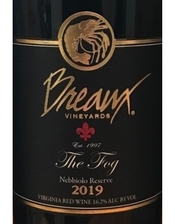 The wine is appropriately named The Fog since nebbia, from which Nebbiolo takes its name, is Italian for fog. This fabulous expression of Nebbiolo speaks for itself so the heavy bottle with the cumbersome wax/rubber overlay to the cork is unnecessary. … Read more
The wine is appropriately named The Fog since nebbia, from which Nebbiolo takes its name, is Italian for fog. This fabulous expression of Nebbiolo speaks for itself so the heavy bottle with the cumbersome wax/rubber overlay to the cork is unnecessary. … Read more
Cave Ridge Vineyard, Shenandoah Valley (Virginia) “Fossil Hill Reserve” Red Wine 2019
($65): 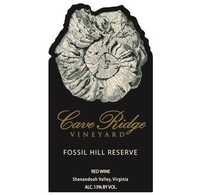 This mid-weight Cabernet Franc-dominant blend displays fabulous herbal/leafy character intertwined with dried and fresh red fruit notes. It packs plenty of punch without being heavy. Supple tannins lend support and balance, while allowing for pleasant current drinking. In a word, yum! … Read more
This mid-weight Cabernet Franc-dominant blend displays fabulous herbal/leafy character intertwined with dried and fresh red fruit notes. It packs plenty of punch without being heavy. Supple tannins lend support and balance, while allowing for pleasant current drinking. In a word, yum! … Read more
Weingut Norbert Bauer, Niederösterreich (Austria) Grüner Veltliner “Schplïnk!” 2023
($41): 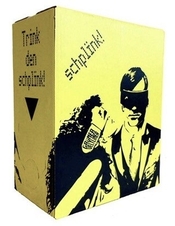 Wine is full of surprises. At what turned out to be a very good, unassuming-looking Cambodian restaurant in Brooklyn, Lulu Mae, I saw a Grüner Veltliner by the glass for all of $12 on their short but enticing wine list. … Read more
Wine is full of surprises. At what turned out to be a very good, unassuming-looking Cambodian restaurant in Brooklyn, Lulu Mae, I saw a Grüner Veltliner by the glass for all of $12 on their short but enticing wine list. … Read more
October One Vineyard, Virginia (United States) Albariño 2022
($29):  Wow! Who knew Albariño could do so well in Virginia? Initial aromatics captivate and predict pleasure. A crisp cutting edginess balances its surprising depth. Zesty spiciness just enhances its appeal. The barest hint of an attractive bitterness, characteristic of the grape, appears in the finish. … Read more
Wow! Who knew Albariño could do so well in Virginia? Initial aromatics captivate and predict pleasure. A crisp cutting edginess balances its surprising depth. Zesty spiciness just enhances its appeal. The barest hint of an attractive bitterness, characteristic of the grape, appears in the finish. … Read more
Bluestone Vineyard, Shenandoah Valley (Virginia) Petit Verdot 2017
($30):  Full disclosure: Petit Verdot ranks near the bottom of my list of varietal wines because they are too often too heavy, too dense, too much of everything. Not this one! Weighing in at a modest 13.5% stated alcohol, it is a delight. … Read more
Full disclosure: Petit Verdot ranks near the bottom of my list of varietal wines because they are too often too heavy, too dense, too much of everything. Not this one! Weighing in at a modest 13.5% stated alcohol, it is a delight. … Read more
Capensis, Western Cape (South Africa) Chardonnay 2020
($80, Sovereign Wine Imports):  Unsurprisingly, this Chardonnay, with its 14.5 percent stated alcohol, delivers considerably more oomph than Capensis’ Silene bottling. More complexity accompanies the additional power, yet the wine is not flamboyant or over-the-top. There is a subtle melon-like fruitiness. … Read more
Unsurprisingly, this Chardonnay, with its 14.5 percent stated alcohol, delivers considerably more oomph than Capensis’ Silene bottling. More complexity accompanies the additional power, yet the wine is not flamboyant or over-the-top. There is a subtle melon-like fruitiness. … Read more
Capensis, Stellenbosch (Western Cape, South Africa) Chardonnay “Silene” 2021
($40, Sovereign Wine Imports): 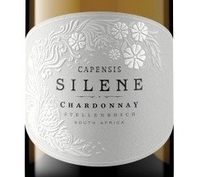 Capensis is a Jackson Family project in South Africa. As you would expect from the Jackson Family, the wines are very good. This offering, their “entry level” (a term I dislike, but am at a loss for an alternative), conveys mild fruitiness and invigorating bright acidity. … Read more
Capensis is a Jackson Family project in South Africa. As you would expect from the Jackson Family, the wines are very good. This offering, their “entry level” (a term I dislike, but am at a loss for an alternative), conveys mild fruitiness and invigorating bright acidity. … Read more
Capensis, Stellenbosch (Western Cape, South Africa) Chardonnay “Fijnbosch” 2020
($115, Sovereign Wine Imports): 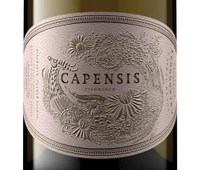 The Fijnbosch bottling, the weightiest of this trio of Capensis Chardonnays, still manages not to avoid the buttery and overdone trap. Instead, it is rich and creamy, quite delectable. Bright backbone keeps it fresh and in balance. … Read more
The Fijnbosch bottling, the weightiest of this trio of Capensis Chardonnays, still manages not to avoid the buttery and overdone trap. Instead, it is rich and creamy, quite delectable. Bright backbone keeps it fresh and in balance. … Read more
Michael Shaps, Monticello (Virginia) “En Hommage, L. Scott” 2020
($58):  Shaps’ unusual blend (Tannat 50%, Merlot 33%, and Malbec) shows the wonderful diversity of grapes and high-quality wine coming from that state. Tannat, a grape native to southwestern France, is known for producing big tannic red wines. Presumably, the inclusion of Merlot and even Malbec is meant to soften Tannat’s edges. … Read more
Shaps’ unusual blend (Tannat 50%, Merlot 33%, and Malbec) shows the wonderful diversity of grapes and high-quality wine coming from that state. Tannat, a grape native to southwestern France, is known for producing big tannic red wines. Presumably, the inclusion of Merlot and even Malbec is meant to soften Tannat’s edges. … Read more
Hark Vineyards, Monticello (Virginia) “Spark” 2019
($48):  This Cabernet Franc-dominate Bordeaux blend confirms what Thomas Jefferson knew centuries ago: Virginia’s Monticello AVA, located in the middle of state, is good place to grow grapes and make wine. Hark’s mid-weight Spark does actually light up the palate. A “just right” amount of structure provides a backbone to this plummy red without being intrusive. … Read more
This Cabernet Franc-dominate Bordeaux blend confirms what Thomas Jefferson knew centuries ago: Virginia’s Monticello AVA, located in the middle of state, is good place to grow grapes and make wine. Hark’s mid-weight Spark does actually light up the palate. A “just right” amount of structure provides a backbone to this plummy red without being intrusive. … Read more
La Crema Winery, Monterey (California) Chardonnay 2022
($20): 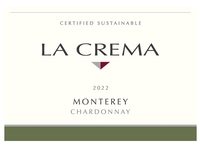 La Crema makes wines from multiple appellations, so check the label carefully. This well-priced versatile Monterey Chardonnay is a crowd-pleaser because it combines a touch of creamy buttery flavors with green apple ones. It is soft enough to savor a glass before a meal and has enough verve to accompany a roast chicken. … Read more
La Crema makes wines from multiple appellations, so check the label carefully. This well-priced versatile Monterey Chardonnay is a crowd-pleaser because it combines a touch of creamy buttery flavors with green apple ones. It is soft enough to savor a glass before a meal and has enough verve to accompany a roast chicken. … Read more
Argentiera, Toscana IGT (Tuscany, Italy) “Poggio al Ginepri” 2022
($25, Volio Imports):  This ripe, 14.5 percent stated alcohol, Cabernet Sauvignon-dominant Bordeaux blend delivers up-front fruitiness wrapped in plush tannins and supported by a touch of firmness that prevents it from being flabby. Good acidity and a hint of bitterness in the finish keep it in balance though the overt fruitiness still predominates at this stage. … Read more
This ripe, 14.5 percent stated alcohol, Cabernet Sauvignon-dominant Bordeaux blend delivers up-front fruitiness wrapped in plush tannins and supported by a touch of firmness that prevents it from being flabby. Good acidity and a hint of bitterness in the finish keep it in balance though the overt fruitiness still predominates at this stage. … Read more
Mountain & Vine Vineyards and Winery, Monticello (Virginia) Chardonnay 2022
($39):  Here is more evidence that the diversity of the Virginia landscape allows that state to produce a wide range of wines, in this case a stylish Chardonnay. Mountain & Vine Vineyards and Winery Chardonnay, one of the top twelve wines from the recently concluded Virginia Governor’s Cup competition, impresses with it finesse. … Read more
Here is more evidence that the diversity of the Virginia landscape allows that state to produce a wide range of wines, in this case a stylish Chardonnay. Mountain & Vine Vineyards and Winery Chardonnay, one of the top twelve wines from the recently concluded Virginia Governor’s Cup competition, impresses with it finesse. … Read more
King Family Vineyards, Monticello (Virginia) Meritage 2019
($75):  Here is another winning wine from Virginia’s Monticello AVA. Surprisingly, Virginia actually ranks among the top ten states in terms of wine production and likely higher in terms of quality. This Merlot-dominate Bordeaux delivers a seamless combination of dark fruitiness and herbal, not-just-fruit elements. … Read more
Here is another winning wine from Virginia’s Monticello AVA. Surprisingly, Virginia actually ranks among the top ten states in terms of wine production and likely higher in terms of quality. This Merlot-dominate Bordeaux delivers a seamless combination of dark fruitiness and herbal, not-just-fruit elements. … Read more
Afton Mountain Vineyards, Monticello (Virginia) “T” 2019
($55): 
